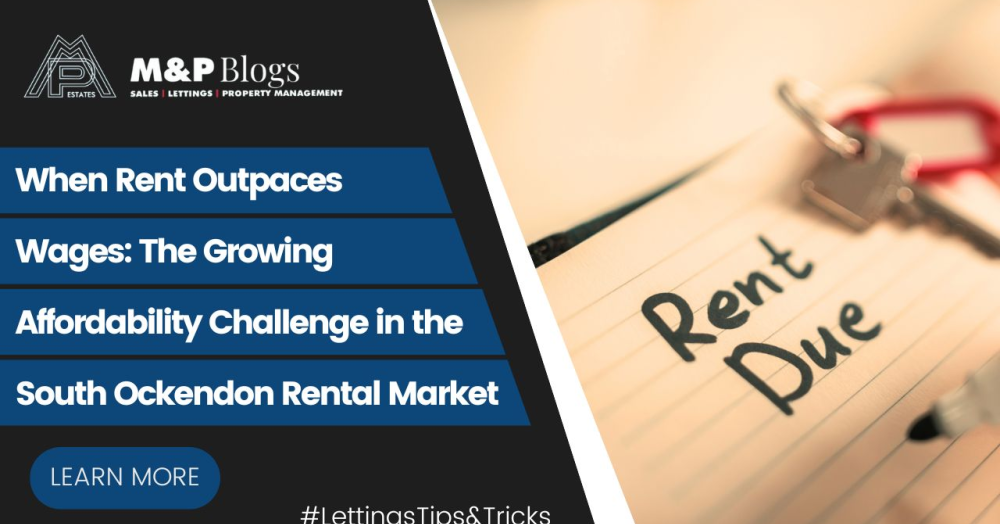Across the UK, tenants are feeling the squeeze. With rents rising faster than wages and the cost of living still high, affordability is under real pressure. For many households, rent now consumes well over the 30–35% threshold of income considered sustainable.
Affordability: A Growing Concern for Tenants
The private rental sector has always been a balancing act between supply, demand, and affordability. But in 2025, that balance is tipping further out of reach for many tenants.
Rents have risen sharply over the past few years—fuelled by low supply, landlord exits, and wider economic factors. At the same time, wages have not kept pace, and the cost of essentials such as food, energy, and transport remain high. For tenants, the result is clear: more of their monthly income is swallowed up by rent, leaving less room for savings, emergencies, or even everyday living.
The 30–35% Rule—and Why It Matters
Housing experts often use a benchmark: if rent costs more than 30–35% of a household’s gross income, affordability is under strain. Today, many tenants are exceeding that threshold. In parts of the South East, London, and even commuter towns like South Ockendon, it’s not uncommon for renters to be spending 40% or more of their income just to keep a roof over their heads.
When rent eats up such a large proportion of income, financial resilience suffers. Tenants may find it harder to cope with unexpected expenses or rising bills, and arrears become more likely.
What’s Driving the Pressure?
Several factors are at play:
- Supply shortages: With many smaller landlords selling up, the pool of rental properties is shrinking.
- High demand: Population growth, household formation, and barriers to home ownership keep demand strong.
- Mortgage costs: Landlords with buy-to-let mortgages face higher interest rates, pushing them to raise rents.
- Living costs: Energy bills, council tax, and food prices have stayed elevated, compounding tenant pressure.
This mix creates a perfect storm where tenants are stretched thinner than ever.
The Impact on Tenants
The consequences of affordability pressure go beyond financial strain. They affect how and where people live, and what kind of homes they choose. Common responses include:
- Compromising on quality – Tenants may accept smaller or older properties if they fit the budget.
- House sharing – More renters are pooling resources, even later in life, to manage costs.
- Location trade-offs – Some move further away from work or schools to find cheaper rents.
- Delayed life plans – Rising costs make it harder for tenants to save for a deposit, start families, or plan long-term.
This is not just a tenant issue—it reshapes communities and puts further pressure on the housing system.
The Landlord’s Perspective
For landlords, rising rents can appear positive at first glance. But stretched tenants mean higher risk of arrears, shorter tenancies, and more turnover. In reality, tenant affordability and landlord stability are closely linked.
The most successful landlords today are those who take a pragmatic approach—balancing fair market rents with an awareness of tenant affordability. In the long run, sustainable tenancies are far more valuable than short-term rent increases.
The Local Picture: South Ockendon and Essex
In South Ockendon and surrounding areas, affordability is a live issue. The town’s proximity to London makes it a popular rental choice, but commuter demand keeps prices high. Families and young professionals alike are feeling the pinch.
That’s why it’s more important than ever for landlords to work with a proactive, transparent agent. At MP Estates, we support both landlords and tenants—helping to set fair rents, minimise void periods, and maintain sustainable tenancies that work for everyone.
Final Thoughts
Affordability pressures are shaping the rental market in ways that affect tenants, landlords, and communities. With rents rising faster than wages, the challenge is not going away any time soon. But by recognising the pressures tenants face and working towards fair, sustainable solutions, landlords can secure longer, more stable tenancies—and tenants can find homes that don’t overstretch their finances.
Are you a landlord concerned about tenant affordability?
Speak to M&P Estates today. We’ll help you price your property competitively, reduce voids, and attract reliable tenants in a market where every pound counts.

